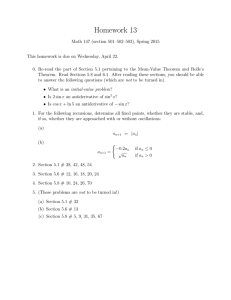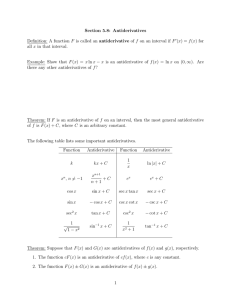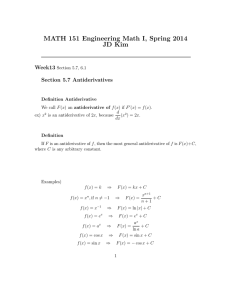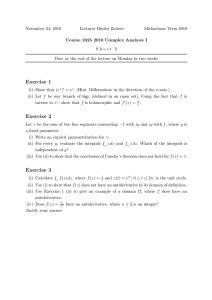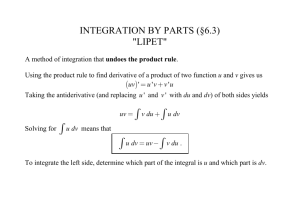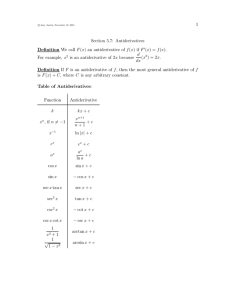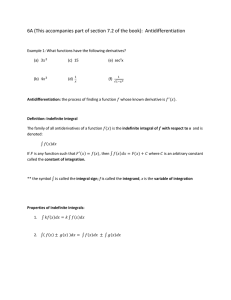Section 5.7: Antiderivatives
advertisement
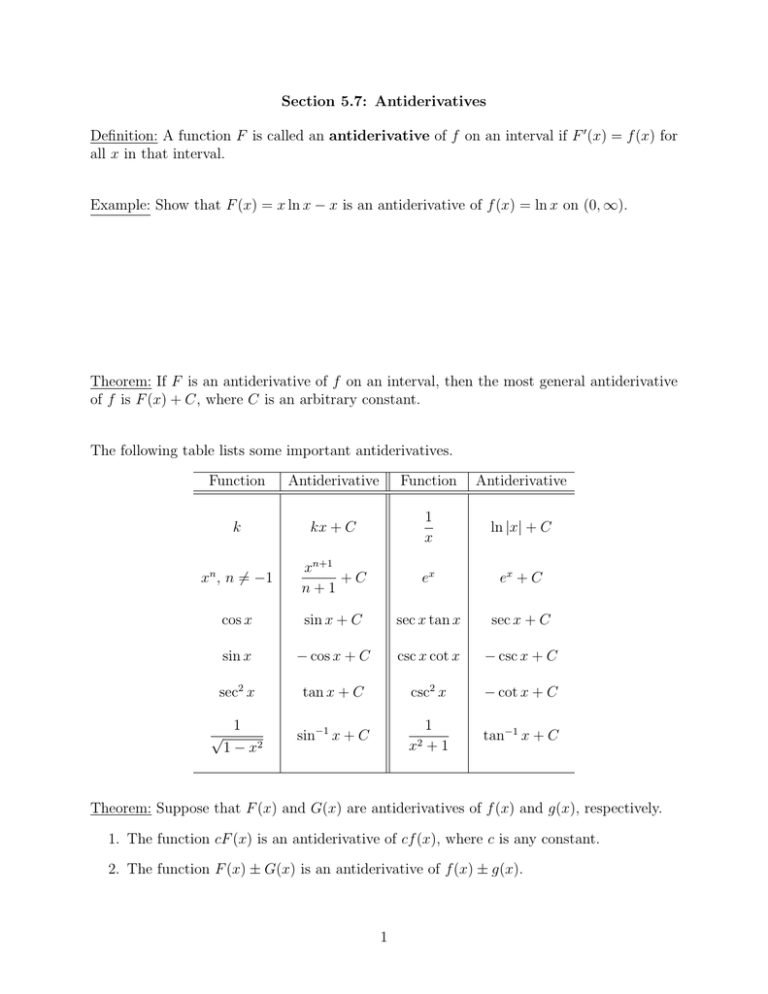
Section 5.7: Antiderivatives Definition: A function F is called an antiderivative of f on an interval if F 0 (x) = f (x) for all x in that interval. Example: Show that F (x) = x ln x − x is an antiderivative of f (x) = ln x on (0, ∞). Theorem: If F is an antiderivative of f on an interval, then the most general antiderivative of f is F (x) + C, where C is an arbitrary constant. The following table lists some important antiderivatives. Function Antiderivative Function Antiderivative k kx + C 1 x ln |x| + C x , n 6= −1 xn+1 +C n+1 ex ex + C cos x sin x + C sec x tan x sec x + C sin x − cos x + C csc x cot x − csc x + C sec2 x tan x + C csc2 x − cot x + C 1 √ 1 − x2 sin−1 x + C 1 +1 tan−1 x + C n x2 Theorem: Suppose that F (x) and G(x) are antiderivatives of f (x) and g(x), respectively. 1. The function cF (x) is an antiderivative of cf (x), where c is any constant. 2. The function F (x) ± G(x) is an antiderivative of f (x) ± g(x). 1 Example: Find the most general antiderivative of each function. (a) f (x) = x3 − 4x2 + 17 (b) f (x) = √ √ 3 x2 − x3 (c) f (x) = x2 + 2x + 3 x (d) f (x) = ex + sin x − sec x tan x 2 Example: Find f (x) if f 0 (x) = 12x2 − 24x + 1 and f (1) = −2. Example: Find f (x) if f 00 (x) = 3ex + 5 sin x, f (0) = 1, and f 0 (0) = 2. Example: The acceleration of a moving particle at time t is given by a(t) = cos t + sin t. Find the position of the particle at time t given that s(0) = 0 and v(0) = 5. 3 Example: A stone is dropped from the upper observation deck of a tower 450 m above the ground. Find the distance of the stone above ground level at time t. Example: A car is traveling at 80 ft/s when the brakes are fully applied, producing a constant deceleration of 40 ft/s2 . What is the distance covered before the car comes to a stop? 4

